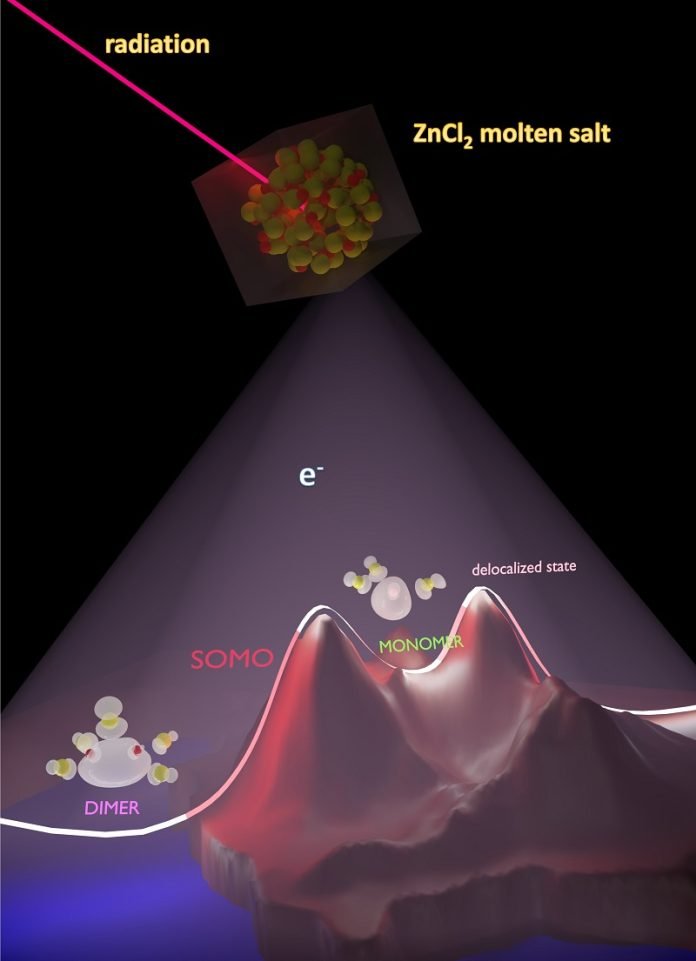
Imagine you’re cooking and you add a pinch of salt to the pot.
Now, think about a special type of salt that can melt and be used in advanced power plants.
Scientists are trying to understand how these “molten salts” work, especially when they’re exposed to radiation.
A team from the Oak Ridge National Laboratory and the University of Iowa conducted a computer study to understand what happens when an extra electron is added to a type of molten salt called zinc chloride.
Here’s what they found:
The extra electron can join with two zinc particles to form a group.
Or, the electron can attach to just one zinc particle.
Sometimes, the electron doesn’t attach to anything but spreads out over many salt particles.
You might wonder, “Why is this important?” As it turns out, molten salt reactors are being thought of as a design for future power plants. But, for them to work safely, we need to understand how these molten salts behave when exposed to radiation.
Vyacheslav Bryantsev, one of the scientists, explained that they want to know what happens to the molten salts when they get hit with a lot of radiation. This is because the salt is used to transport fuel in these advanced power plants.
Claudio Margulis, another scientist involved, said that the study shows the electron can make different groups with the salt particles in a very short time. They wonder what other groups might form if given more time. Margulis mentioned that the electron might go back to where it came from or combine with other particles to form new groups.
What’s more interesting is what happens when there are many of these electrons and groups close together. They might interact to create even more complex groups!
These findings were published in a journal called The Journal of Physical Chemistry B. The paper was so impressive that it was chosen as an “Editor’s Choice,” which means it’s really special and could interest a lot of people. The paper even made it to the journal’s front cover!
This study is part of a bigger research project called the Molten Salts in Extreme Environments Energy Frontier Research Center, or MSEE EFRC for short. This project aims to answer big questions about energy by getting scientists from different fields to work together.
James Wishart, who is in charge of the MSEE EFRC, said that this research is vital. It helps us understand the different ways electrons can behave when there’s radiation in molten salt reactors. Now, the team is trying to see these behaviors in real-life experiments.
Bryantsev pointed out that many questions still need answers. For example, they wonder if electrons interact the same way with different types of molten salts.
Hung Nguyen, who was the main writer of the paper, shared that he and the team are continuing their research. They’re looking at other molten salt systems to get more answers about how radiation affects them.
In simple words, these findings are a big step forward in understanding how molten salts behave. This is super important because molten salts might play a huge role in the power plants of the future.
By learning more about them now, we can make sure they’re used safely and efficiently in the future.



